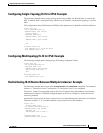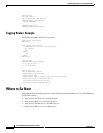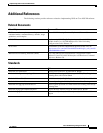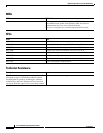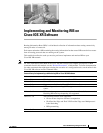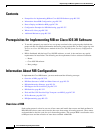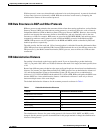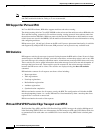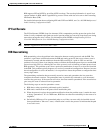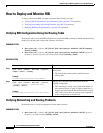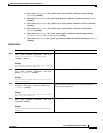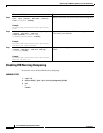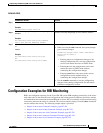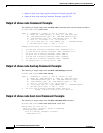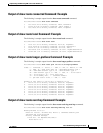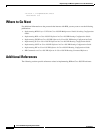
Implementing and Monitoring RIB on Cisco IOS XR Software
Information About RIB Configuration
RC-323
Cisco IOS XR Routing Configuration Guide
OL-14356-01
RIB supports 6PE and 6VPE by providing 6VPE next hops. The next-hop information is stored in an
opaque database in RIB, which is populated by protocol clients with data to be sent to the Forwarding
Information Base (FIB).
For detailed information about configuring 6PE and 6VPE over MPLS, see Cisco IOS XR Multiprotocol
Label Switching Configuration Guide.
IP Fast Reroute
The IP Fast Reroute (IPFRR) loop-free alternate (LFA) computation provides protection against link
failure. Locally computed repair paths are used to prevent packet loss caused by loops that occur during
network reconvergence after a failure. For information about IPFRR see Implementing IS-IS on
Cisco IOS XR Software in Cisco IOS XR Routing Configuration Guide.
Note IPFRR is supported on the Cisco CRS-1 router.
RIB Quarantining
RIB quarantining solves the problem in the interaction between routing protocols and the RIB. The
problem is a persistent oscillation between the RIB and routing protocols that occurs when a route is
continuously inserted and then withdrawn from the RIB, resulting in a spike in CPU use until the
problem is resolved. If there is no damping on the oscillation, then both the protocol process and the RIB
process have high CPU use, affecting the rest of the system as well as blocking out other protocol and
RIB operations. This problem occurs when a particular combination of routes is received and installed
in the RIB. This problem typically happens as a result of a network misconfiguration. However, because
the misconfiguration is across the network, it is not possible to detect the problem at configuration time
on any single router.
The quarantining mechanism detects mutually recursive routes and quarantines the last route that
completes the mutual recursion. The quarantined route is periodically evaluated to see if the mutual
recursion has gone away. If the recursion still exists, the route remains quarantined. If the recursion has
gone away, the route is released from its quarantine.
The following steps are used to quarantine a route:
1. RIB detects when a particular problematic path is installed.
2. RIB sends a notification to the protocol that installed the path.
3. When the protocol receives the quarantine notification about the problem route, it marks the route
as being “quarantined.” If it is a BGP route, BGP does not advertise reachability for the route to its
neighbors.
4. Periodically, RIB tests all its quarantined paths to see if they can now safely be installed (moved
from quarantined to "Ok to use" state). A notification is sent to the protocol to indicate that the path
is now safe to use.



